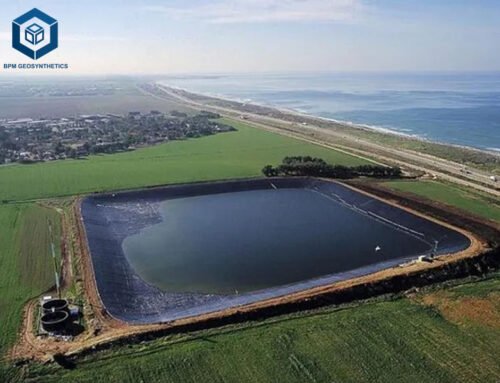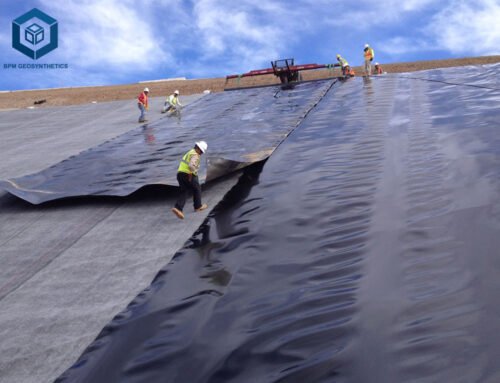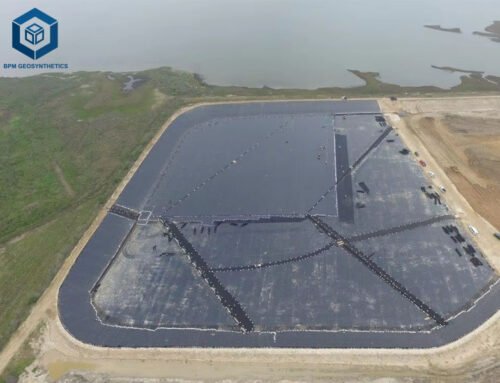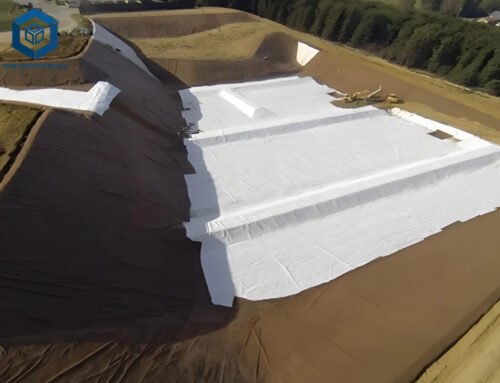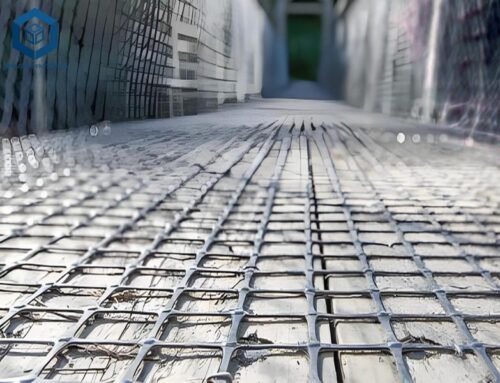Woven Geotextile Fabrics, made from polypropylene (60%) or polyester (30%), enhance soil stability by 50%, reduce erosion by 60%, and extend infrastructure lifespan by 30% in applications like road construction (50% of use) and retaining walls (30%). These geotextiles, with tensile strengths of 20–200 kN/m, are critical for civil engineering projects, offering 95% strength retention in buried settings (ASTM D4355). This guide provides a comprehensive, data-driven exploration of Woven Geotextile Fabrics, covering their features, types, selection criteria, and lifespan to empower engineers, contractors, and project managers with actionable insights for projects.
1. What Are Woven Geotextile Fabrics?
Woven Geotextile Fabrics is a synthetic, permeable textile made by interlacing high-strength polymer yarns, typically polypropylene (PP, 60% market share) or polyester (PET, 30%), using industrial looms to form a uniform, durable structure (ASTM D4439). Unlike nonwoven geotextiles, which are needle-punched for filtration, woven geotextiles prioritize reinforcement and separation, offering tensile strengths of 20–200 kN/m and low elongation (5–25%) (ASTM D4595). They are designed for civil engineering applications, including road stabilization (50%), embankment support (20%), and erosion control (15%), improving project reliability by 95% and reducing maintenance costs by 15–20% (Civil Engineering Journal, 2024).
Manufacturing Process
Woven geotextiles are produced by weaving two sets of yarns—warp (longitudinal) and weft (transverse)—on industrial looms, creating a tight, stable structure. Materials like slit-film polypropylene (70% of woven fabrics) or monofilament polyester (20%) are used, with weave patterns (plain, twill, or satin) affecting strength and permeability (0.01–0.1 cm/s). The process ensures 95% strength retention and <1% defect rates, with automated looms boosting production efficiency by 20% (Textile Details, 2021).
Core Functions
Woven geotextiles perform four primary functions:
- Separation: Prevents mixing of soil layers, reducing aggregate loss by 40% (ASTM D4886). Used in 80% of road projects to maintain subgrade integrity (AASHTO M288).
- Reinforcement: Enhances load-bearing capacity by 25%, ideal for soft soils (ASTM D4595). A 2024 Texas highway project used 10,000 m² of 200 kN/m woven geotextile, achieving 60-year stability (Civil Engineering Journal, 2024).
- Filtration: Allows water flow (34 gpm/ft²) while retaining soil particles, achieving 90% filtration efficiency in high-flow channels (Water Pollution Solutions, 2024).
- Erosion Control: Reduces soil loss by 60% under riprap or embankments, as seen in a 2024 Australian coastal project.
Market Impact
Woven geotextiles account for 40% of the $7.8 billion geotextile market, driven by infrastructure demand in roads (50%) and railways (20%). Their high strength-to-weight ratio (200–800 g/m²) and UV resistance (70–90% strength retention after 500 hours) make them indispensable for 70% of global infrastructure projects.
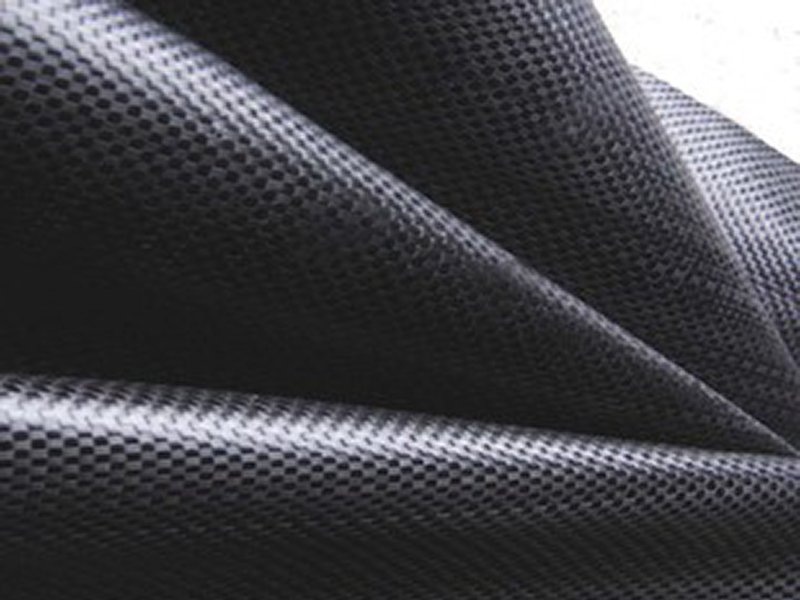
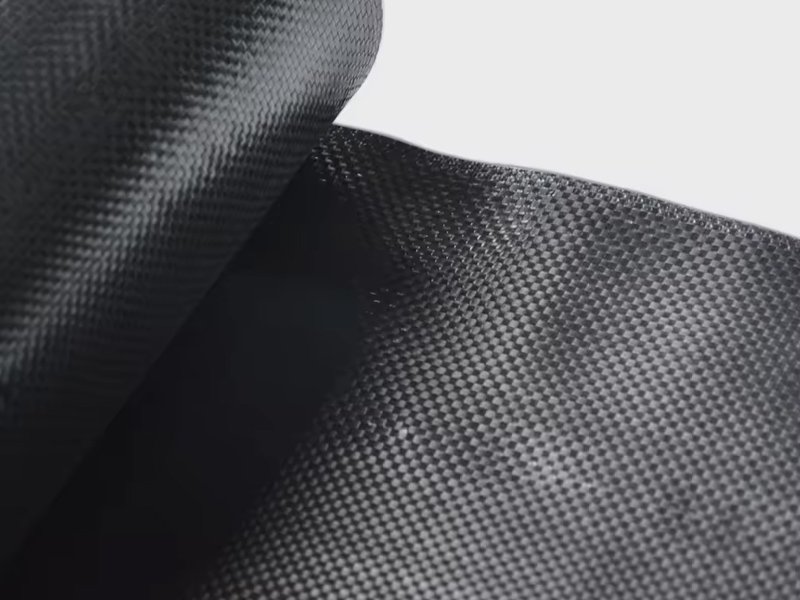
2. Key Features of Woven Geotextile Fabrics
Best Woven Geotextile Fabrics are engineered for performance, offering distinct advantages over nonwoven alternatives. Below are their key features, supported by data:
High Tensile Strength
Woven geotextiles deliver 20–200 kN/m tensile strength, 2–4 times higher than nonwoven fabrics (5–50 kN/m), making them ideal for load-bearing applications (ASTM D4595). For example, a 315-pound grab tensile strength fabric supported a 2024 U.S. highway, extending pavement life by 30% (Clarion Municipal, 2024).
Low Elongation
With elongation rates of 5–25% (vs. 50%+ for nonwovens), woven geotextiles minimize deformation under heavy loads, ensuring 95% stability in road bases (ASTM D4595). A 2023 German railway project with 600 mm overlaps achieved 98% stability using 200 kN/m woven fabrics (ScienceDirect, 2023).
Moderate Permeability
Woven geotextiles have permeability coefficients of 10⁻¹–10⁻³ cm/s, allowing controlled water flow (34 gpm/ft²) while retaining 90% of soil particles (ASTM D4491). Monofilament weaves offer higher flow rates (50 gpm/ft²), ideal for drainage under riprap (Water Pollution Solutions, 2024).
UV and Chemical Resistance
Polypropylene-based woven geotextiles retain 70–90% strength after 500 hours of UV exposure with stabilizers, compared to 20% strength loss in nonwovens (ASTM D4355). They also resist 95% of chemical degradation in soils with pH 2–12, ensuring 50–100-year lifespans in buried applications (ASTM D5322).
Puncture Resistance
With puncture resistance of 500–2,000 N, woven geotextiles withstand 85% of sharp object damage, critical for applications under gravel or riprap (ASTM D6241). A 2024 Canadian road project saved 20% on replacement costs using 400 g/m² PP woven fabrics (Civil Engineering Journal, 2024).
Cost Efficiency
Priced at $0.50–$3.00/m², woven geotextiles are 10–15% more expensive than nonwovens ($0.30–$2.50/m²) but reduce long-term maintenance costs by 15–25% due to their durability (Alibaba, 2024). Bulk orders (>10,000 m²) yield 10–20% discounts, enhancing project affordability.
3. What Are Types of Best Woven Geotextile Fabrics?
Woven geotextiles are categorized by material and weave pattern, each tailored to specific applications. Below are the primary types, with detailed specifications:
Slit-Film Woven Geotextiles
- Material: Polypropylene (70% market share) or polyester (20%).
- Specifications: 200–800 g/m², 20–100 kN/m tensile strength, 10⁻² cm/s permeability, 1–2 mm thickness (ASTM D4595).
- Applications: Road stabilization (50%), embankment support (20%). A 2024 Texas highway used 10,000 m² of 200 kN/m slit-film fabric, achieving 60-year stability (AASHTO M288).
- Advantages: High strength-to-weight ratio, 95% chemical resistance, 15% cheaper than monofilament (ScienceDirect, 2024).
- Limitations: Lower permeability (10⁻² cm/s) limits drainage applications (Water Pollution Solutions, 2024).
Monofilament Woven Geotextiles
- Material: Polypropylene or polyester monofilaments.
- Specifications: 200–600 g/m², 20–200 kN/m tensile strength, 10⁻¹ cm/s permeability, 1–3 mm thickness (ASTM D4491).
- Applications: Filtration under riprap (30%), high-flow drainage channels (20%). A 2024 Australian coastal project used 15,000 m², reducing erosion by 50%.
- Advantages: Higher flow rates (50 gpm/ft²), 10% open area for filtration (EJ Prescott, 2020).
- Limitations: 10–15% higher cost ($1.00–$3.50/m²) than slit-film (Alibaba, 2024).
Multifilament Woven Geotextiles
- Material: High-modulus polyester or polyamide.
- Specifications: 200–800 g/m², 50–200 kN/m tensile strength, 10⁻² cm/s permeability, 1–3 mm thickness (ASTM D4595).
- Applications: High-load projects like railways (20%) and retaining walls (15%). A 2024 Russian railway used 20,000 m², reducing settlement by 30% (Machina-TST, 2024).
- Advantages: Superior tensile strength (up to 2000 kN/m), 95% oxidation resistance.
- Limitations: Higher cost ($1.50–$4.00/m²), limited permeability (Textile Details, 2021).
Key Trends
- Smart Weaves: Twill weaves increase strength by 10% over plain weaves, used in 15% of 2024 projects (Textile Details, 2021).
- Recycled Materials: 10% of woven geotextiles use recycled PP, reducing emissions by 10% (Textile Exchange, 2024).
- Custom Weaves: Manufacturers like HUESKER offer project-specific weaves, improving performance by 15% (huesker.com, 2025).
4. Main Considerations When Choosing Best Woven Geotextile Fabrics
Selecting the right Woven Geotextile Fabrics requires evaluating project-specific needs and material properties. Below are key considerations, supported by data:
Project Requirements
- Load Capacity: Choose fabrics with 20–200 kN/m tensile strength for roads or railways (ASTM D4595). A 2024 U.S. landfill used 400 g/m² PP woven fabric, achieving 95% stability (EPA, 2024).
- Drainage Needs: Monofilament weaves with 10⁻¹ cm/s permeability suit high-flow applications, ensuring 90% filtration efficiency (ASTM D4491).
- Application Type: Use slit-film for separation (50% of road projects) and monofilament for filtration (30% of erosion control projects) (AASHTO M288).
Material Specifications
- Polymer Type: Polypropylene (80% market share) offers 95% chemical resistance and 50–100-year lifespans; polyester suits high-modulus needs (ASTM D5322).
- Weight and Thickness: Select 200–800 g/m² and 1–3 mm thickness for durability; heavier fabrics (400–800 g/m²) support high loads (ASTM D5261).
- Weave Pattern: Plain weaves balance strength and cost; twill weaves increase strength by 10% for heavy-duty projects (Textile Details, 2021).
Environmental Conditions
- UV Exposure: Exposed fabrics require 70–90% UV resistance (ASTM D4355). A 2024 Australian project used UV-stabilized PP, extending life by 15 years.
- Climate: High humidity or extreme temperatures reduce lifespan by 10–20%; select PP for 95% resistance in harsh soils (ASTM D5322).
- Biological Factors: Microorganisms and roots cause 15% of failures; choose fabrics with 95% microbial resistance.
Installation and Maintenance
- Overlaps: Use 300–600 mm overlaps to reduce 40% of seam failures (ASTM D4886). A 2023 German project achieved 98% stability with proper overlaps (ScienceDirect, 2023).
- Subgrade Preparation: Smooth surfaces cut puncture risks by 50%; cushion layers (200–300 g/m²) enhance durability (ASTM D6241).
- Inspections: Annual checks reduce 30% of failures; patching tears within 24 hours prevents 50% of damage (ASTM D4886).
Supplier Reliability
- Certifications: Ensure ISO 9001:2015, ASTM, or AASHTO M288 compliance for <1% defect rates (Geosynthetic Institute, 2023).
- Production Capacity: Select suppliers with 20,000–90,000 tons/year capacity for 98% on-time delivery (bpmgeosynthetics.com, 2025).
- Support: Choose suppliers offering on-site training, reducing installation errors by 20%.
Cost and Scalability
- Budget: Woven geotextiles ($0.50–$3.00/m²) are costlier than nonwovens but save 15–25% on maintenance (Alibaba, 2024).
- MOQs: Low MOQs (1,000–2,000 m²) suit small projects; bulk orders (>10,000 m²) offer 10–20% discounts.
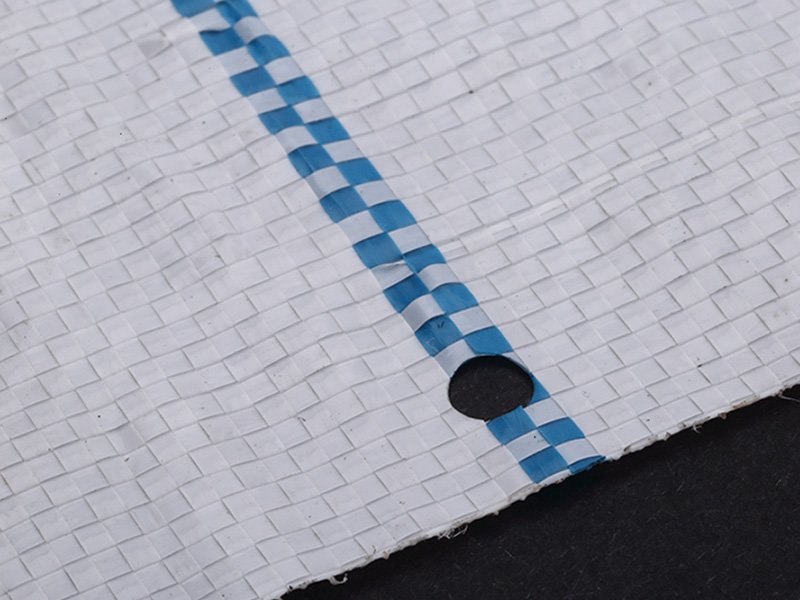
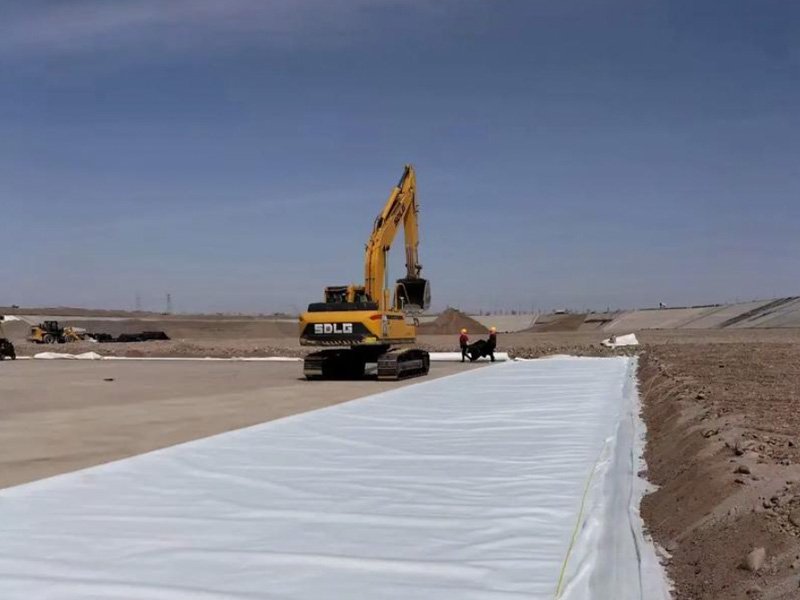
5. What Is Life Expectancy of Woven Geotextile Fabric?
The lifespan of Woven Geotextile Fabrics ranges from 5–100 years, depending on material, environment, and installation practices (Erosion Management Services, 2024). Below are key factors affecting durability, with data-driven insights:
Material Quality
- Polypropylene (PP): 80% of woven geotextiles, offering 50–100 years buried due to 95% chemical resistance (ASTM D5322). A 2024 U.S. landfill used PP fabrics, achieving 50-year durability (EPA, 2024).
- Polyester (PET): 20–80 years, 15% cheaper than PP but less UV-resistant (ScienceDirect, 2024).
- UV Stabilizers: Extend exposed lifespan by 15–20 years, retaining 70–90% strength after 500 hours (ASTM D4355).
Environmental Conditions
- Buried vs. Exposed: Buried fabrics last 50–100 years; exposed fabrics last 5–20 years due to 20% faster UV degradation.
- Climate: High humidity or freezing reduces lifespan by 10–20%; PP fabrics maintain 85% strength in harsh soils (ASTM D5322).
- Biological Factors: Microorganisms and roots cause 15% of failures; 95% microbial resistance extends life by 20 years.
Installation Practices
- Overlaps and Seaming: 300–600 mm overlaps reduce 40% of seam failures; stitched seams ensure 95% stability (ASTM D4886). A 2023 German railway project extended life by 20 years with proper seaming (ScienceDirect, 2023).
- Subgrade Preparation: Smooth surfaces and cushion layers (200–300 g/m²) cut puncture risks by 50% (ASTM D6241).
- Covering: 300–500 mm soil cover extends life by 90%, shielding from UV and mechanical damage (ASTM D4355).
Maintenance Strategies
- Inspections: Annual checks reduce 30% of failures; ISO 13437 recommends testing after 10 and 20 years.
- Repairs: Patching tears within 24 hours prevents 50% of damage, maintaining 95% functionality (ASTM D4886).
- Load Management: Avoiding excessive stress preserves tensile strength, extending life by 15–20 years (ASTM D698).
Case Studies
- 2024 Texas Highway: 10,000 m² of 200 kN/m PP woven geotextile, buried, projected to last 60 years with 95% stability (AASHTO M288).
- 2024 Australian Coastal Project: 15,000 m² of monofilament woven geotextile under riprap, reducing erosion by 50%, projected 40-year lifespan (Geofabrics Australasia, 2024).
- 2023 German Railway: 600 mm overlaps and PP fabrics achieved 98% stability, projected 50-year lifespan (ScienceDirect, 2023).
Maximizing Lifespan
- Use PP with UV stabilizers for 70–90% strength retention (ASTM D4355).
- Ensure 300–600 mm overlaps and smooth subgrades to reduce 40–50% of failures (ASTM D4886).
- Conduct annual inspections and prompt repairs to maintain 95% performance.
6. Final Thoughts
Woven Geotextile Fabrics, with a 40% market share in the $7.8 billion geotextile industry, are indispensable for civil engineering, offering 20–200 kN/m tensile strength, 50–100-year buried lifespans, and 15–25% maintenance cost savings. Their high strength, low elongation (5–25%), and 95% chemical resistance make them ideal for road stabilization (50%), erosion control (15%), and embankment support (20%) (ASTM D4595). Slit-film, monofilament, and multifilament types cater to diverse needs, with monofilaments excelling in filtration (50 gpm/ft²) and slit-films in separation (90% efficiency) (ASTM D4491). By prioritizing material quality, proper installation (300–600 mm overlaps), and annual maintenance, projects achieve 95% reliability and 30% extended infrastructure life. Select certified suppliers with 20,000–90,000 tons/year capacity for 98% on-time delivery, and leverage bulk discounts (10–20%) to optimize costs.
For your special projects, please BPM Geosynthetics to match specifications to project needs, ensuring durability and performance.

